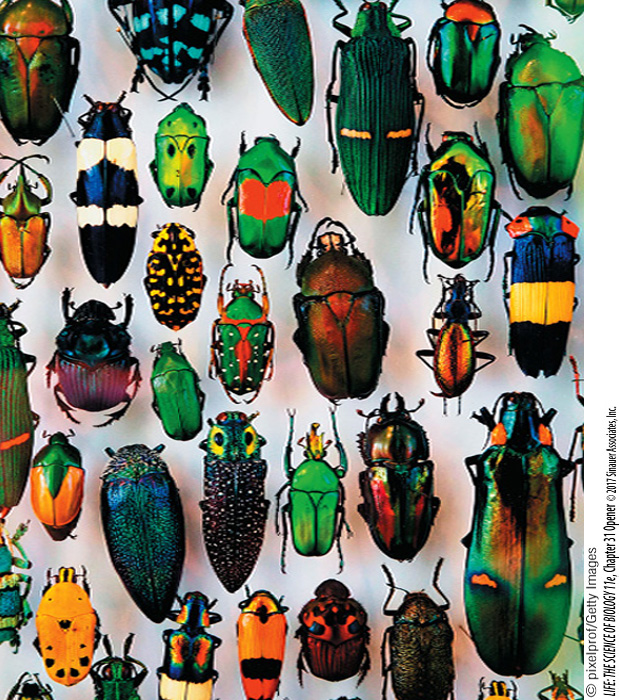Chapter Introduction
Protostome Animals

investigating life
Exploring the Diversity of Life on Earth
Of the 1.8 million species of life that have been discovered and named by biologists, a large majority are protostomes. One group of protostomes, the insects, accounts for more than 1 million of these species, or more than half of all known species of living organisms. Although these numbers may seem incredibly large, they represent a relatively small fraction of the total protostome diversity that is thought to exist on Earth.
As recently as the 1980s, many biologists thought that about half of existing insect species had been described, but today they think that the number of described insect species may be a much smaller fraction of the total number of living species. Why did they change their minds?
A simple but important field study suggested that the number of existing insect species had been significantly underestimated. Knowing that the insects of tropical rainforests—
Erwin then used a set of assumptions to estimate the total number of insect species in tropical rainforests. His assumptions included estimates of the number of species of trees in these forests; the proportion of beetles that specialize on a specific species of host tree; the relative proportion of beetles to other insect groups; and the proportion of beetles that live in trees versus those that live in leaf litter on the ground. From this and similar studies, Erwin estimated that there may be 30 million or more species of insects on Earth. Although recent tests of Erwin’s assumptions suggest that 30 million was an overestimate, it is clear that the vast majority of insect species remain to be discovered.
Erwin’s pioneering study highlighted the fact that we live on a poorly known planet, most of whose species have yet to be named and described. Much of that undiscovered diversity occurs among several groups of protostomes.
Which groups of protostomes are thought to contain the most undiscovered species?